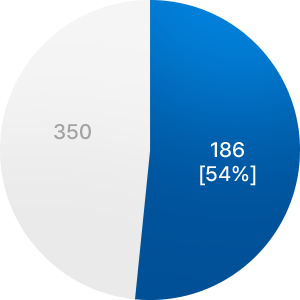CSBR
CSBR (CSBR, Continuous flow Sequencing Batch Reactor)

CSBR Process
CSBR process, which is economical in terms of footprint and maintenance costs, is suitable for use with medium and large-scale wastewater treatment facilities. It is a city-friendly construction technology that is advantageous for underground facilities.
-
Applied to 20 facilities in Korea;
40 facilities around the world
Features
Features
CSBR is a continuous batch advanced
sewage treatment technology that combines A2O and SBR processes.
-
Composed of anoxic tank, anaerobic tank, and aerobic tank, highly efficient nitrogen and phosphorus removal effect.
-
Continuous inflow/discharge of treated effluent without change in water level within the reaction tank, eliminating separate flow control tank and final settling tank > Minimum site area.
-
The process of repeatedly treating A2O process water with SBR process is excellent for responding to load fluctuations.
-
Quintessence sedimentation/discharge of the SBR tank optimizes SS removal efficiency through optimal sludge solid-liquid separation.
Process Flow
Process Flow


CSBR bioreactor is arranged in a configuration of
continuous flow anoxic tank, anaerobic tank and aerobic
tank (A2O process), followed by two symmetrically configured constant level SBR tanks for recycling activated sludge
(RAS), batch treatment, quiescent settling and decanting of
treated supernatant.
After the influent undergoes anoxic-anaerobic-aerobic reactions,
it flows into the SBR tanks in the form of sludge mixtures (MLSS).
While one SBR tank is in reaction process performing RAS recycling, batch treatment and quiescent settling, the other
SBR tank is in decanting process discharging the treated supernatant. Waste activated sludge (WAS) is withdrawn from the
SBR tank
that is in decanting mode.
The SBR tanks operate alternately during 24 hours in a cycle basis, and all of these preocesses are automatically
controlled
according to the CSBR operation cycle.
<SBR Tanks Treatment Process>
SBR#1

SBR#2

* SBR tank #1, #2 altanative operation
Excellence of CSBR : Domestic project examples
Excellence of CSBR :
Domestic project examples
- Capacity: 80,000㎥/d
- year: 2001
<Jinkun STP >
![]() Budget
Budget
![]() CSBR
CSBR
-

Footprint
[Unit : ㎡] -

Construction Cost
[Unit : MM won] -

Operation Cost
[Unit : 100MM won/year]
- Capacity: 100,000㎥/d
- year: 2002
<Jinkun STP >
![]() Budget
Budget
![]() CSBR
CSBR
-

Footprint
[Unit : ㎡] -

Construction Cost
[Unit : MM won] -

Operation Cost
[Unit : 100MM won/year]
Excellence of CSBR when compared to other technologies
Excellence of CSBR
when compared to other technologies

| Technology |
Process Efficiency |
Construc tability |
Construc-tion cost |
Operating expenses |
Scalability | Total |
|---|---|---|---|---|---|---|
| CSBR | 80 | 95 | 90 | 95 | 90 | 460 |
| MCSBR | 90 | 90 | 95 | 90 | 95 | 465 |
| A2O | 80 | 85 | 85 | 80 | 85 | 415 |
| SBR | 85 | 85 | 80 | 85 | 80 | 415 |
| MBR | 95 | 80 | 80 | 75 | 85 | 415 |
Canada Bonny Brook
50% footprint reduction(2017)
Treatment plant capacity : 123,000 ㎥/day
- When a new CSBR treatment plant with the same
capacity
was constructed, the required area was only 45m,
requiring less than 50% of the site area compared
to the previous Conventional Activated Sludge (CAS)
treatment plant.

Indian Media Reports
Indian
Media Reports
CSBR's superior economic and technical feasibility
was verified by the Brihanmumbai Municipal Corporation
(BMC) through a visit and examination of a CSBR
treatment plant in the Republic of Korea

-
New record in the history of Indian sewage treatment plants with a construction contract at 54% of the original bidding price
Competitiveness seen in the bid for Bhandup 215,000㎥/day sewage treatment plant
Competitiveness seen in
the bid for Bhandup
215,000㎥/day sewage
treatment plant
<Bhandup STP>
- Capacity: 80,000㎥/d
- year: 2001
![]() Budget
Budget
![]() CSBR
CSBR
-

Footprint
[Unit : ㎡] -

Construction Cost
[Unit : MM won] -

Operation Cost
[Unit : 100MM won/year]
| Process | Footprint (m²) | Construction cost (MMwon) | Power (KW) |
|---|---|---|---|
| SBR | 28,800 | 350 | 7,227 |
| CSBR | 20,237 | 186 | 1,574 |
| Comparative advantage | 70% | 54% | 22% |
CSBR is superior in all aspects including footprint, construction cost, and power consumption.
Rothwell Water Main Equipment
Rothwell Water Main Equipment
Treated Water Decanter System
Control Panel System
Diffuser System
| Item | Specifications |
|---|---|
| Material | EDPM(Option: PU/Silicone) |
| Thickness | 1.9mm±0.2mm |
| Density | 1.11±0.03g/m³ |
| Tensile Strength | >7 MPa |
| Enlongation Rate | > 400% |
| Tear Strength | > 7.5N/m |
| Hardness | 40±5Shore A |
Sludge Transfer System
T-RAS System
Scum Removal Device



















